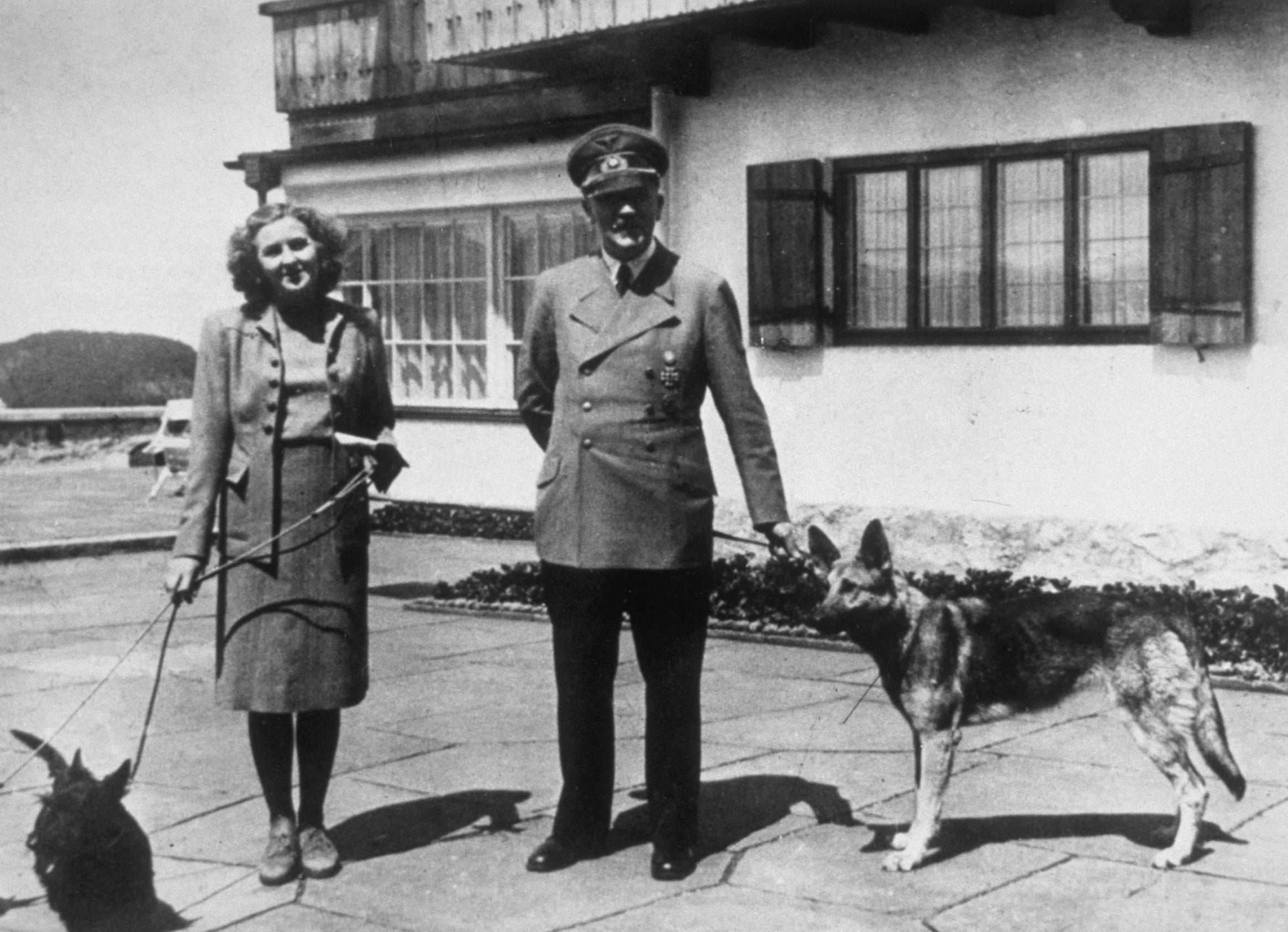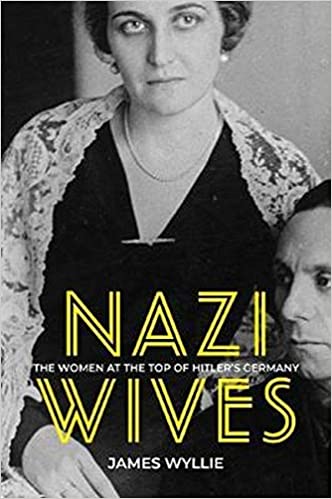‘How on earth can she be married to him?’: The stories of the Nazi wives
In James Wyllie’s new book, the author shines a light on the little-known women married to the highest echelons of Hitler’s Nazi party, writes Marianne Szegedy-Maszak

Your support helps us to tell the story
From reproductive rights to climate change to Big Tech, The Independent is on the ground when the story is developing. Whether it's investigating the financials of Elon Musk's pro-Trump PAC or producing our latest documentary, 'The A Word', which shines a light on the American women fighting for reproductive rights, we know how important it is to parse out the facts from the messaging.
At such a critical moment in US history, we need reporters on the ground. Your donation allows us to keep sending journalists to speak to both sides of the story.
The Independent is trusted by Americans across the entire political spectrum. And unlike many other quality news outlets, we choose not to lock Americans out of our reporting and analysis with paywalls. We believe quality journalism should be available to everyone, paid for by those who can afford it.
Your support makes all the difference.Who among us hasn’t felt that schadenfreudian thrill of wondering, “How on earth can she be married to him?” (Apologies, Ms Chao!) At once superior and voyeuristic, the question assumes that the woman is perfectly nice, even charming, while her husband is – by dint of affect, arrogance, offensive opinions or lack of appropriate social inhibition – actively repellent. The mystery of any marriage becomes more mysterious still when the character flaws of one half of the couple are so disproportionate to the apparent rectitude of the other. What brought them together? Why does she stay? Is he really a different and more appealing person than the one who is talking with his mouth full at dinner?
Thus, the mere title of James Wyllie’s new book, Nazi Wives: The Women at the Top of Hitler’s Germany, promises a delicious opportunity to answer a few of those more intimate questions about a group of towering figures in the canon of male monstrosity. They are so well-known that their surnames are all we need to summon the epochal evils of Hitler’s regime: Goebbels, the minister of propaganda; Goering, the Luftwaffe commander and second-most-powerful Nazi; Heydrich, Gestapo chief and “final solution” architect; Himmler, the SS chief and Holocaust implementer; Hess, deputy Führer; and Bormann, Hitler’s private secretary. All of them had their specific remit of horrors, and all of them were committed to Adolf Hitler and the anti-Semitic, racist, xenophobic and totalitarian values of his regime. In seeing the dynamics of their married lives, do we learn something more about these men – their motivations, their petty jealousies, their messy and repugnant humanity – that could shed light on what they did?
For years, the role of women in Nazi Germany was eclipsed by the preoccupation with the actions of prominent men. Then, as Wyllie notes, in the 1980s feminist scholarship began to examine this world. In her book Hitler’s Furies: German Women in the Nazi Killing Fields (a 2013 finalist for National Book Award), Wendy Lower observed, “The consensus in Holocaust and genocide studies is that the systems that make mass murder possible would not function without the broad participation of society, and yet nearly all histories of the Holocaust leave out half of those who populated that society, as if women’s history happens somewhere else.” Lower looked at the women in the trenches, the wives of some of the camp leaders, and women who worked as willing agents for the regime.
If these women were the worker bees, Wyllie, a British author, screenwriter and broadcaster, focuses on the queens. The women who in various ways competed for Hitler’s attention to embody the beau ideal of womanhood in the Reich: fecund, contentedly subservient, vying for the Fürher’s admiration. Extra points for a sense of humour. Ilse Hess, who unfortunately had a husband who made the mistake of getting captured in Scotland in 1941 because of a botched diplomatic mission and spent his life imprisoned, would describe “how much Hitler enjoyed a good laugh; not one for telling jokes, Hitler did impressions and liked nothing better than listening to a well-told funny story as long as it wasn’t about him”. You don’t get this from learned histories of the Second World War.
Despite Hitler’s well-known bachelorhood (until his hasty, pre-suicide marriage to Eva Braun), his leadership was required to be married, never divorce and have many children. Magda Goebbels for many years claimed the title of “first lady of the Reich” for her blond beauty and for the six blond and beautiful children she had with her wily and serially unfaithful husband, the Nazi propaganda minister. Wyllie describes her rather dignified desire to have a quiet divorce while her husband was enmeshed in another passionate romance, and her genuine suffering when that was denied. In a gesture of ultimate loyalty, or despair, the parents poisoned all six children on May 1, 1945, before poisoning themselves.
Hermann Goering was widowed in 1931, when his beloved and always sickly Swedish wife, Carin, died after a heart attack. But Carin’s presence throughout his subsequent marriage to the actress Emmy Sonnemann seemed to border on a menage a trois. Her name was affixed to their home and to his yachts; her portraits hung prominently. Nonetheless, Emmy, with her beauty, talent and wit, could ignore her predecessor as she enjoyed the incredible riches bestowed on her by her predacious husband: several estates, castles, lavish jewels, and most notably an astonishing art collection accumulated from the Reich’s various conquests and from Jewish collectors who were sent to the camps. Early on, she became another favourite of Hitler’s, serving as hostess at many official functions and becoming another “first lady of the Reich”.
Her thespian self-confidence, combined with her cosseted life, made her a bit too arrogant and condescending to Eva Braun, whom she held in special contempt. The ever-loyal, emotionally unstable and utterly immature Braun flits in and out of the lives of several of the wives, forging alliances but breaking others. Hitler, who clearly had more important things to worry about than the complaints of his mistress, sent Goering a harsh note demanding that his wife treat Eva with more respect. After that, Emmy lost her standing in Hitler’s inner circle but compensated with her position as the wife of one of the most powerful, and certainly one of the wealthiest, men in Europe.

Goering and Carin never had children, and his sexuality never matched the robust promiscuity of Joseph Goebbels and Reinhard Heydrich. As Wyllie writes, “Emmy and Goering’s sex life had already given rise to a number of wedding night jokes that focused on his performance in the bedroom (for example, that Emmy had stopped going to church after their honeymoon because she’d lost faith in the resurrection of the flesh).” Eventually, they had a daughter, Edda, and Goering celebrated by having 500 planes fly over Berlin in their honour. (Edda died in 2018, still loyal to her dad.)
Wyllie acknowledges that much of the source material “has to be treated with caution”. But he recounts their stories with a bracing combination of scholarship and an almost cinematic – not surprising, given his other work – approach to spinning a compelling narrative. While the bombing of Britain, the Russian campaign, the Holocaust, the unspeakable suffering inflicted on humanity by these people unfolded as an international catastrophe, Wyllie shows us the petty competitions, the moments of domestic sadism, the appalling grift and the daily lives of those responsible for it. Like in the most banal Real Housewives episode, we see the in-groups and out-groups establish themselves. Margaret Himmler, corpulent and determined, and Lina Heydrich, lacking any public stature or particular charisma, were never included in what Wyllie describes as the “Berghof clique.” And so they involved their husbands. There is something disorienting about imagining Heinrich Himmler, the man who created the unsparing efficiency of the Nazi extermination machine, chiding his SS colleague Heydrich about the behaviour of his wife.
“Even though they might not have been privy to their husbands’ daily decisions,” Wyllie writes, “the evidence of their murderous work was all around: the looted art on the walls; the furniture made from human skin and bones stashed in the attic; the fruit and vegetables taken from the local concentration camp gardens; the slave labor tilling their land.” In the end, one is left thinking that the question of how could she possibly be married to him may not be the right one. Instead, I thought of what Samuel Butler once wrote about the marriage of Jane and Thomas Carlyle: “It was very good of God to let Carlyle and Mrs Carlyle marry one another, and so make only two people miserable and not four.”
Nazi Wives: The Women at the Top of Hitler’s Germany By James Wyllie. The History Press Ltd, £20.
© The Washington Post




Join our commenting forum
Join thought-provoking conversations, follow other Independent readers and see their replies
Comments